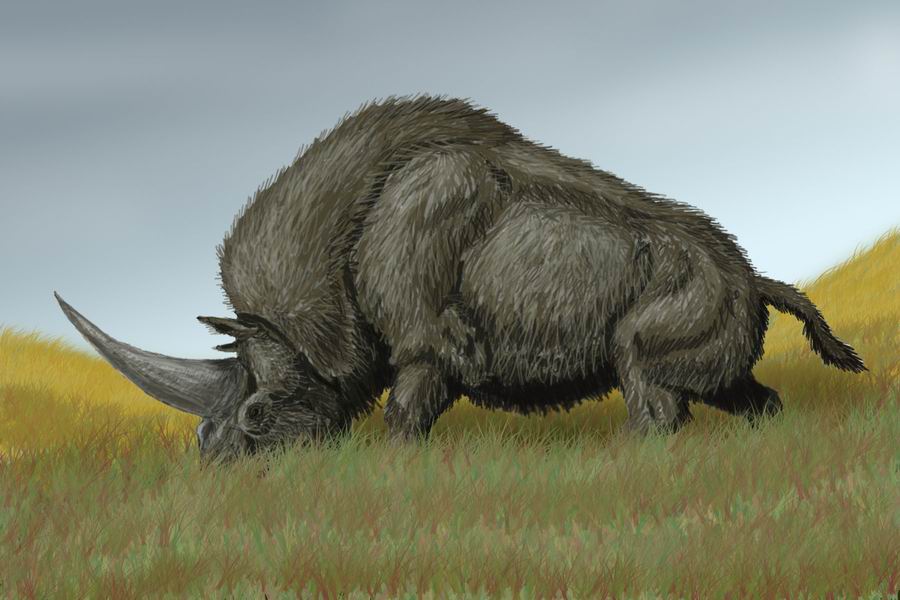
Early humans roamed the planet with a colossal shaggy rhinoceros that scientists have dubbed the “Siberian unicorn.”
The so-called unicorn, officially known as Elasmotherium sibericum, was a large rhinoceros that wandered Eastern Europe and Central Asia from 2.6 million years ago until just around 39,000 years ago.
The animals weighed a staggering 4 tons and were adorned with an enormous single horn measuring over 3 feet in length. Its legs were much longer than modern-day rhinos, leading experts to believe that they likely trotted along with a horse-like gait.
The beasts’ sizable horn was likely used for defense, attracting a mate, digging for water and plant roots, and sweeping snow from the grass in the winter. Like modern rhinos, Elasmotherium was an herbivore. However, these guys had a much more limited diet and subsisted exclusively on tough, dry grasses.

Limited data led paleontologists to originally believe that the animals had gone extinct over 200,000 thousand years ago, but new genetic analysis and radiocarbon dating revealed that they may have stuck around until as recently as 39,000 years ago—a time when they would have shared the planet with early humans.
Elasmotherium – A big rhinoceros that existed as early as 29,000 years ago also known as Siberian Unicorn. from r/natureismetal
The species was likely wiped out because of its inability to adapt to a changing climate near the end of the Ice Age when grasslands were fewer and farther between, and the animals were unable to cope due to their extremely limited diet.
The fact that the species went extinct from such a small alteration in climate is alarming to researchers, as modern-day rhinos face similar threats. Not only that, today’s rhinos are already struggling to survive as poachers continue to decimate species to fuel the trade in rhino horn. Let’s hope our rhinos of today don’t meet the same fate as the planet’s only “unicorn.”
Video:




